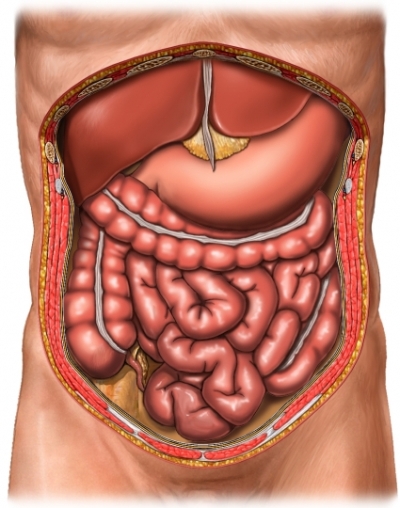Celiotomy – Abdominal study
Description of laparotomy
Celiotomy – an autopsy of the abdominal wall for inspection organs and tissues inside the abdomen.

Reasons for laparotomy
This procedure is performed, to assess the condition of the abdomen.
Problems, where is assigned to laparotomy, They include:
- The hole in the intestinal wall (ulcer);
- Ectopic (ectopic) pregnancy;
- Endometriosis;
- Appendicitis;
- Damage to internal organs injury;
- Infection in the abdominal cavity;
- Cancer.
Possible complications of laparoscopy
Complications are rare, but no operation does not guarantee the absence of complications. If you plan to laparotomy, a list of possible complications may include:
- Bleeding;
- Incision infection;
- Blood clots;
- Damage to internal organs;
- Education hernias;
- Large scars;
- The negative reaction to anesthesia.
Factors, that may increase the risk of complications:
- Previous surgery in the abdominal cavity;
- Diabetes;
- Diseases of the heart and lungs;
- Weak immune system;
- Violations in the circulatory system;
- Taking certain medications;
- Smoking, alcohol abuse, drug use.
Risk of complications should be taken into account before the procedure.
As be laparotomy?
Before surgery
Preparation for the procedure:
Before the surgery, do the following survey:
- Perform a physical exam;
- Make blood and urine tests;
- Perform ULTRASOUND – analysis, which uses sound waves, to see the internal parts of the body;
- Conduct kompjuternuja scans – X-ray examination, which uses a computer, to make pictures of internal organs;
- MRT – analysis, which uses magnetic waves, to see the internal organs.
You may need to stop taking certain drugs for one week before the procedure:
- Do not take anti-inflammatory drugs (eg, aspirin);
- Do not take blood thinners, as clopidogrel (Plaviks) or warfarin.
Do not eat for 24 hours prior to the procedure.
Anesthesia
The procedure almost always is performed under general anesthesia.
Spinal anesthesia is used when the possible complications from the use of general anesthesia – analgesia is exposed from the chest down to the feet.
Laparotomy procedure description
Doctor will make one long incision along the abdomen. Authorities investigated for the presence of disease. The doctor may take a biopsy interesting body. During a laparotomy may be made necessary surgical intervention. After conducting a laparotomy incision is stitched with threads or clamped-clamped.
How long does it take to laparotomy?
About 1-4 o'clock.
Will it hurt?
Anesthesia prevents pain during procedure. To reduce the pain after the procedure, You must take pain relievers.
The average duration of stay in hospital is several days. If complications arise, period increased.
Nursing care after surgery
In the hospital
- Maybe, have to wear special socks or shoes, to prevent blood clots;
- To aid in urinating, You may need to use a catheter;
- You can use an incentive spirometer, helps deeper breathing.
Houses
It can take several weeks, that body has fully recovered.
- Follow medical prescriptions;
- Sutures or Staples removed through 7-10 days;
- Do not expose the incision infection;
- Wash and bathe with ostorozhnostja, no water got in the wound;
- During the first two weeks after surgery do not lift objects;
- Slowly increase the intensity of movements. Start with light housework, short walks;
- To speed healing of the incision, Eat plenty of fruits and vegetables.
Try to avoid constipation:
- Do not eat foods that are high in fiber;
- Drink plenty of water;
- If necessary, take laxatives.
You should immediately go to the hospital in cases:
- The emergence of fever or oznoba;
- Krasnoja, naʙuxanie, strong pain, bleeding, or any selection from the place of incision;
- Abdominal distention;
- Diarrhea or constipation, which lasts longer than 3 day;
- Bright red or dark black stool;
- Dizziness or fainting;
- Nausea and vomiting;
- Cough, breathlessness, or chest pain;
- Pain or difficulty urinating;
- Swelling, Krasnoja, or leg pain.
